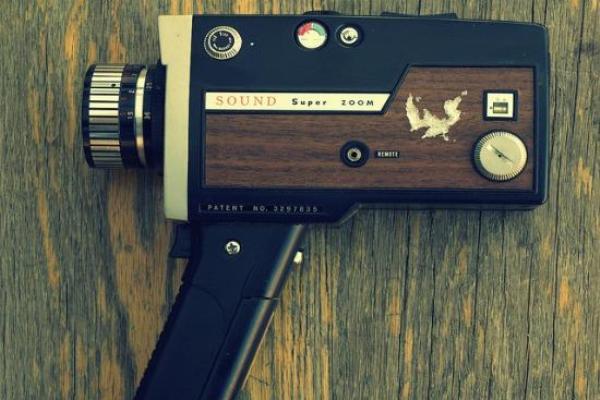Super 8 Film Created the Digital Videographer Nation

Super 8, the latest summer blockbuster from wunderkind director J.J. Abrams, may be a work of science fiction, but the warm, nostalgic sentiments the film expresses towards the medium its named after remain very real in the hearts of amateur videographers. After all, it was Super 8 film, the first format available commercial for the production of home movies, that spawned the DIY film movement that today encompasses millions of YouTube clips and countless low budget movies.
With Abrams’ Super 8 set to take theaters by storm this weekend, the historically significant film format is certain to receive a whole new crop of attention—both from sentimental adults who grew up using it, and a younger generation who will likely consider the analog medium an antidote to the ubiquitous, slick, digital video.
“I think the look of digital is pretty flat,” said experimental filmmaker Al Nigrin, who now serves as the executive director of the United States Super 8mm Film Festival. “It’s the way people compare analog music to digital music. There’s a warmth that you get from a record versus a CD. Of course there are limitations—there are scratches on the film the way there are pops on a record—but it’s a look certain people are drawn to.”
When first released by Kodak in 1965, the Kodachrome super 8 mm format almost singlehandedly created the home movie market. Compared to its two immediate predecessors – 8 mm and 16 mm film – super 8 was cheap (at around $5 a roll), simple to use, and required only a small, handheld camera that slipped easily into one’s pocket. Filmmaking was suddenly an accessible and feasible hobby.
Super 8 became the film format of choice for young families, who could tote the camera to picnics, birthday parties, and baseball games around without much trouble.
“For me, it was inexpensive, I was in control of everything, and I could edit the film in my study,” Nigrin told InnovationNewsDaily. “There’s a dreamy quality to the look of the film, and I fell in love with that.”
That dreamy quality is the reason some filmmakers continue to shoot with super 8 today. It may not be able to deliver the crisp, immaculate picture that digital video can, but super 8’s imperfections and flaws are simply part of its aesthetic charms.
Sign up for the Live Science daily newsletter now
Get the world’s most fascinating discoveries delivered straight to your inbox.
21-year-old artist Ugla Hauksdottir first encountered super 8 while taking film courses at The Cooper Union, and immediately fell in love with the versatility of the medium. She continues to use the format for her “precious personal art projects.”
“I’ve done a lot of hand-painting on film as well as multiple exposures,” Hauksdottir says. “It’s the kind of work I could artificially produce on the computer, but rather wish to completely create in camera or by hand.”
“I certainly hope [Abrams′ movie] brings back more attention [to super 8 mm film], though I don’t think it’s ever gone away,” Nigrin said. “ Even though Kodachrome has died a miserable death, there are still tons of people shooting stuff out there.”
This story was provided by InnovationNewsDaily, sister site to LiveScience. Follow InnovationNewsDaily on twitter @News_Innovation, or on Facebook.









